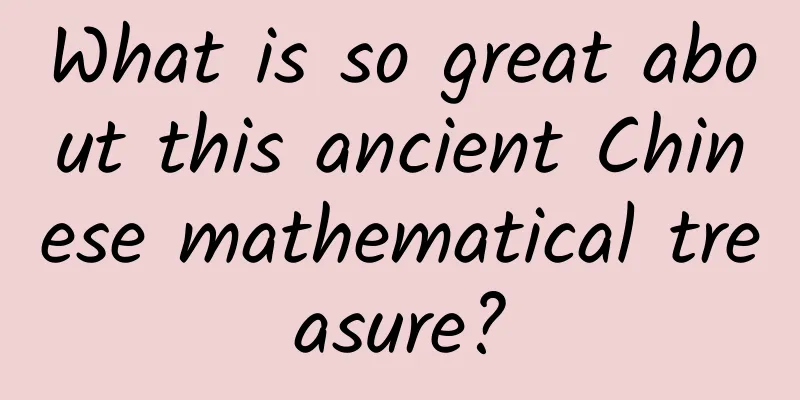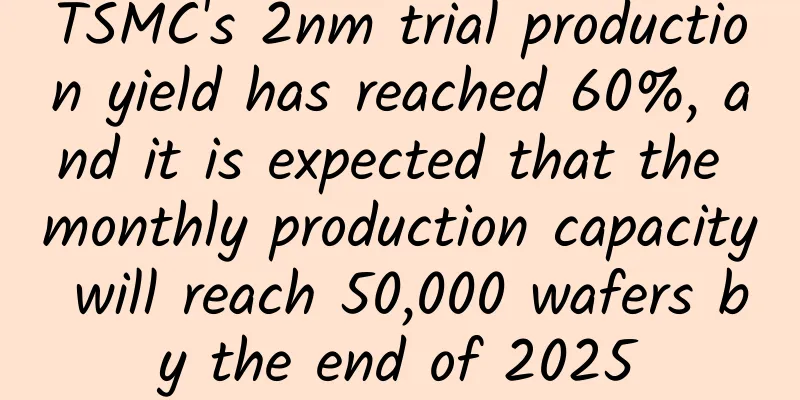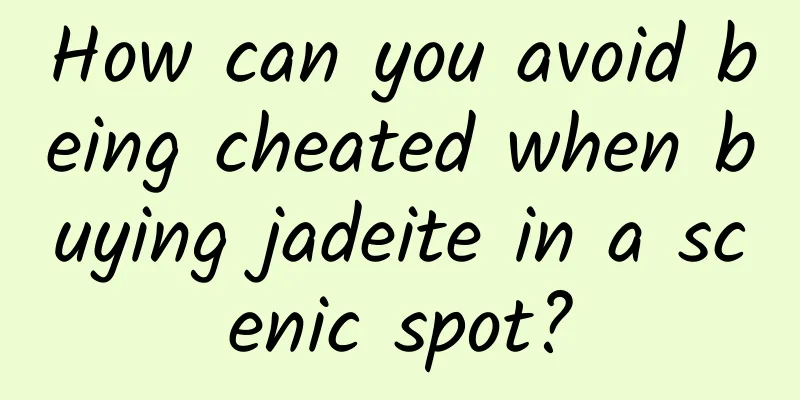What is so great about this ancient Chinese mathematical treasure?

|
Ancient Chinese mathematics has a long history. The Nine Chapters on the Mathematical Art, written in the Han Dynasty, has always been known as the "first of mathematical classics" and is the most important mathematical work among them. As the late academician of the Chinese Academy of Sciences and famous mathematician Mr. Wu Wenjun (1919-2017) said: "The lofty status of the Nine Chapters on the Mathematical Art and its annotations by Liu Hui in the development of mathematics in history is comparable to that of Euclid's Elements in ancient Greece, each with its own characteristics." So, what mathematical achievements does "Nine Chapters on the Mathematical Art" have, and why does it have such a high status in the history of mathematics? Let’s take a look today. Counting rods and quasi-decimal place value system The expression of numbers is an important way for humans to understand the world. The Nine Chapters on the Mathematical Art, written in the Han Dynasty, summarizes the mathematical achievements since the pre-Qin period . The most important mathematical achievement recorded in it is the quasi-decimal positional counting method of counting rods. The so-called decimal system is to count from 1 and change the counting method to 10; the so-called place-value system is that the same number has different quantitative meanings when placed in different positions. Ancient Egyptian mathematics used the decimal system, but it was not a place-value system (it was actually a base-value system); ancient Babylonian mathematics used a place-value system, but it used a sexagesimal system. Modern counterparts, Hindu-Arabic numerals, are decimal place values, and from the records in the literature, they are later than Chinese counting rods. Therefore, Singaporean scholar Lam Lay Yong even proposed that Hindu-Arabic numerals originated from Chinese counting rods. In 2016, the "Important Scientific and Technological Inventions and Creations in Ancient China" compiled by the Institute of the History of Natural Sciences of the Chinese Academy of Sciences clearly included this achievement. Counting sticks have been used in China for about 2,000 years. They were a mathematical tool that the Chinese had long used before being replaced by the abacus in the 16th century. They were also a mathematical tool that Japan, Korea, Vietnam, Ryukyu and other countries in the Chinese character cultural circle had long used. They are generally made of bamboo (occasionally ivory, bone, lead, and silver), and were about 12 cm long in the Han Dynasty. In modern times, many counting sticks have been unearthed. In November 1983, 28 ivory counting sticks were unearthed from a Han tomb in Xunyang, Shaanxi Province. Japan also has counting sticks. In ancient language, "筭" and "算" are different. The former means to play with bamboo, that is, counting sticks; the latter is an object for counting sticks, which is extended to calculation. Therefore, it is generally written as "筭术" (i.e., the algorithm using counting sticks) in ancient books, such as "九章筭术". There are two types of counting rods: vertical and horizontal. The vertical method is used for the ones, hundreds, and tens of thousands, and the horizontal method is used for the tens, thousands, and millions. For example, 12345 is arranged in the shape of Because the 1 in the tens place and the 1 in the ones place are placed differently, I call it the "quasi-place value system". This precisely reflects the characteristics and advantages of counting with counting rods. Since 0 is treated as an empty space, this vertical and horizontal difference can highlight the empty space to the maximum extent, such as: Indicates 203 It cannot be 23 (). The equations in Volume 8 of the Nine Chapters on the Mathematical Art involve the arithmetic of positive and negative, and the color and placement of the counting sticks can also be used to distinguish between positive and negative. Algorithm-centric The Art of Arithmetic in Nine Chapters on the Mathematical Art The Nine Chapters on the Mathematical Art is divided into nine volumes, containing 246 mathematical problems. There has always been a misunderstanding in the academic community that the book is a collection of applied problems. In fact, there are only about 100 algorithms (i.e., techniques) corresponding to the 246 problems, and it is often the case that multiple problems correspond to one algorithm. Therefore, mathematical historian Guo Shuchun pointed out that the book takes the form of "techniques governing examples". There is also a misunderstanding that the book is an algorithm operation manual and that planners do not need to understand the mathematical principles contained therein. In response to this, mathematical historian Li Jimin pointed out that the process of implementing the algorithm contains mathematical principles (i.e., "putting principles into calculations"), so it is impossible to actually calculate without understanding the mathematical principles. Mr. Wu Wenjun pointed out that the ancient Chinese algorithms have the characteristics of constructiveness and mechanization. The so-called constructiveness, corresponding to modern existential mathematics, means that its algorithms often provide solution paths, while mechanization refers to its counting process. French scholar Karine Chemla, through a large amount of detailed literature analysis, pointed out that the mathematical problems, diagrams and geometric tools such as the 棊, and the implementation of counting rods in the book and its Liu Hui's annotations are actually tools for displaying algorithms, thus effectively proving that ancient Chinese mathematics represented by "Nine Chapters on the Mathematical Art" is algorithm-centered mathematics. From the perspective of world mathematical history, except for ancient Greek mathematics, all other mathematical civilizations have an algorithmic tendency. The Danish mathematical historian Jens Høyrup further believes that Chinese mathematics is the one that attaches the most importance to algorithms among all civilizations. In the past, the academic community believed that the Nine Chapters on the Mathematical Art had practical and social characteristics. In fact, other mathematical civilizations also have these characteristics. Only the high emphasis on algorithms is unique to ancient Chinese mathematics. In this sense, the Nine Chapters on the Mathematical Art can be regarded as a theoretical mathematical work. One of the first volumes of the Nine Chapters on the Mathematical Art gives the rules for calculating fractions using counting rods and the formulas for calculating the areas of various fields. Among them is the formula for the area of a circle: "half the circumference multiplied by the radius is the product of the steps" (i.e. π), which cleverly avoids the value of pi and is therefore completely accurate. Volume 2, Millet, gives the conversion of various grains, and proposes a "method now", which is to find the fourth number of the ratio of three known numbers. This algorithm is called the "three-rate method" in the West. Volume 3 discusses the proportional distribution of various items. Volume 4, Shao Guang, deals with the measurement and division of land, and gives an algorithm for taking square roots and cube roots using counting rods. This method was developed in the Song Dynasty into a general algorithm for finding numerical solutions to arbitrary high-order equations with one variable, which is similar to Newton's method in modern mathematics. Volume 5, Shang Gong, is an engineering problem involving the volume calculation of various geometric bodies. Three basic geometric bodies (i.e., cube, trench and ridge) are proposed as the basis for solving the volume of any geometric body. The so-called cube is a regular cube; the so-called trench is a triangular pyramid with an equilateral right triangle as the base, and two trenches make up a cube; the so-called ridge is a four-sided pyramid with a square base and one edge perpendicular to the base, and three ridges make up a cube. Volume 6, Equal Distribution, is about the issue of proportional distribution of taxes. Volume 7 is an algorithm for solving problems by making two assumptions. This algorithm is called the "double assumption method" in the West. Because this method can understand any problem as a linear problem and then find the solution, it is also called the universal algorithm. Volume 8 Equations is a complete algorithm for solving multivariate linear equations, which gives the rules of positive and negative math that must be used when dealing with this problem. For example, the first question: Now there are three bunches of top rice, two bunches of middle rice, and one bunch of bottom rice, which are 39 dou in weight; two bunches of top rice, three bunches of middle rice, and one bunch of bottom rice, which are 34 dou in weight; one bunch of top rice, two bunches of middle rice, and three bunches of bottom rice, which are 26 dou in weight. Question: How much weight is in one bunch of top, middle, and bottom rice? Answer: One bunch of top rice is 9 dou and one-quarter dou, one bunch of middle rice is 4 dou and one-quarter dou, and one bunch of bottom rice is 2 dou and three-quarter dou. The following equation is listed according to the technique, and its solution process is similar to the modern matrix equation solution method. After modern mathematics was introduced to China in the late Qing Dynasty, Li Shanlan borrowed the ancient word "equation" to translate equation, which actually changed the original meaning of equation. Volume 9, Pythagorean Theorem, discusses the area calculation problems of plane figures, and provides the Pythagorean theorem and its various variations. Give an argument for the correctness of the algorithm Liu Hui's Annotations to the Nine Chapters on the Mathematical Art The Nine Chapters on the Mathematical Art only gives the algorithm without proof of its correctness, which was previously regarded as evidence that Chinese mathematics was inferior to ancient Greek mathematics represented by Geometry. Modern research on the history of mathematics has shown that this view is completely untenable. First, except for ancient Greek mathematics, mathematical civilizations often only give algorithms without proofs. Therefore, Mr. Wu Wenjun believes that the history of mathematics is formed by the rise and fall of the two major themes of algorithmic tendency and deductive tendency. Secondly, whether there is a proof in the text actually depends on the nature of the text and the context in which it is produced. In other words, the absence of a proof in the text does not mean that there is no proof in mathematical practice. Third, scholars such as Lin Lina believe that the mathematical proof of ancient Greece should not be regarded as the only form of proof, and there are different forms of proof in other civilizations. The second and third points can be verified from Liu Hui's annotations. In the fourth year of Wei Jingyuan (263), Liu Hui annotated the Nine Chapters on the Mathematical Art, and gave arguments for the correctness of the algorithms in most of the texts. In particular, in the proof of the formula for the area of a circle in Volume 1, the annotation of the formula for the volume of a sphere in Volume 4, and the proof of the volume of Yangma in Volume 5, he used the reasoning method of limit approximation, showing his extremely high logical reasoning ability. In the process of solving the formula for the volume of a sphere in Volume 4, Liu Hui invented the Mouhe square cover, but was unable to calculate its volume, so he "waited for someone who could speak." This problem was eventually solved by Zu Chongzhi and his son. Liu Hui's proof of geometric problems required the use of graphs (plane problems) and 棊 (three-dimensional problems), and his reasoning principle was summarized by Wu Wenjun as the "principle of complementary input and output." The Influence and Historical Status of "Nine Chapters on the Mathematical Art" The Nine Chapters on the Mathematical Art was used as a textbook in the Imperial Academy of Mathematics in both the Tang and Song dynasties. After Liu Hui, Li Chunfeng of the Tang Dynasty, Jia Xian, Liu Yi, Jiang Zhou of the Northern Song Dynasty, Qin Jiushao, Yang Hui, Li Ye of the Jin Dynasty, and Zhu Shijie of the Yuan Dynasty all developed ancient Chinese mathematics along the route of the Nine Chapters on the Mathematical Art, and it reached a peak in the Song and Yuan dynasties. During the Ming and Qing dynasties, the mainstream of Chinese mathematical development changed, but the overall framework of the Nine Chapters on the Mathematical Art did not change. Japanese mathematics developed the Japanese arithmetic based on Chinese Song and Yuan mathematics, and in the 19th century it could handle elementary calculus problems such as area summation. Since Li Yan (1892-1963) and Qian Baocong (1892-1974) pioneered the study of Chinese mathematical history, The Nine Chapters on the Mathematical Art and its later annotations have been regarded as landmark works of Chinese mathematical achievements, but they mainly focused on the similarities between the Nine Chapters on the Mathematical Art and modern mathematics. In fact, the unique algorithms in The Nine Chapters on the Mathematical Art are also great achievements of Chinese mathematics. Together, they illustrate the uniqueness of the historical path of Chinese mathematics and the validity of its historical experience. Mr. Wu Wenjun understood the algorithms of ancient Chinese mathematics as computer software, and tools such as counting rods and abacus as computer hardware, thus creatively proposing the idea of mathematical mechanization. This is a typical example of "applying the past to the present" in ancient Chinese mathematics. Planning and production This film is a work supported by the Science Popularization China·Creation Cultivation Program Produced by: China Association for Science and Technology, Science and Technology Press, Beijing Zhongke Xinghe Culture Media Co., Ltd. Author: Zhu Yiwen, PhD in History of Science and Technology, Professor and Doctoral Supervisor of the Department of Philosophy at Sun Yat-sen University, and Full-time Researcher at the Institute of Logic and Cognition Planning丨Lin Lin Editor: Linlin Zhong Yanping Proofread by Xu Lai |
<<: What determines the taste and appearance of peaches? It took us 14 years to figure it out
Recommend
After running information flow ads in Moments three times, this is my bitter experience
I am a channel promoter in the wedding photograph...
Jurong SEO Training: Is SEO optimization of trade websites easy? Are pop-up ads useful?
Foreign trade websites are literally different fr...
Taobao merchants' internet cables were cut at midnight on "Double 11"
The sales from 0:00 to 1:00 in the morning of &qu...
Apple releases latest operating system, Siri can learn to quack like a duck
As long as you upgrade to Apple’s latest iPhone o...
How to operate and promote industrial Internet products?
The operation of industrial Internet products is ...
I thought it was a stomach problem, but it turned out to be a myocardial infarction! During the rainy season, be alert to this symptom!
In recent days, at Zhejiang Provincial People'...
ASO knowledge that you must know for app promotion (including Android and iOS), ASO optimization strategy
As everyone knows, ASO refers to the search optim...
Can the star system closest to the sun become humanity’s future interstellar home?
Can the star system closest to the sun become hum...
Marketing Promotion: Are you still doing viral marketing? Give meme marketing a try!
Viral marketing, which is often criticized but al...
Apple encourages users to upgrade to iOS 15: The option to stay on iOS 14 has been cancelled
For users still running iOS 14, Apple is encourag...
Detailed explanation of WeChat business agent model | 3 core agent models revealed
I have to say that’s a great question and one I’m...
Attention! Autumn is the peak season for allergies! How to deal with it?
After the fall, some people appeared Itchy eyes a...
Chen Beibei: What are the benefits of search engine optimization?
With the rapid development of the Internet, many ...
How does China combat desertification? | World Day to Combat Desertification and Drought
Produced by: Science Popularization China Author:...









